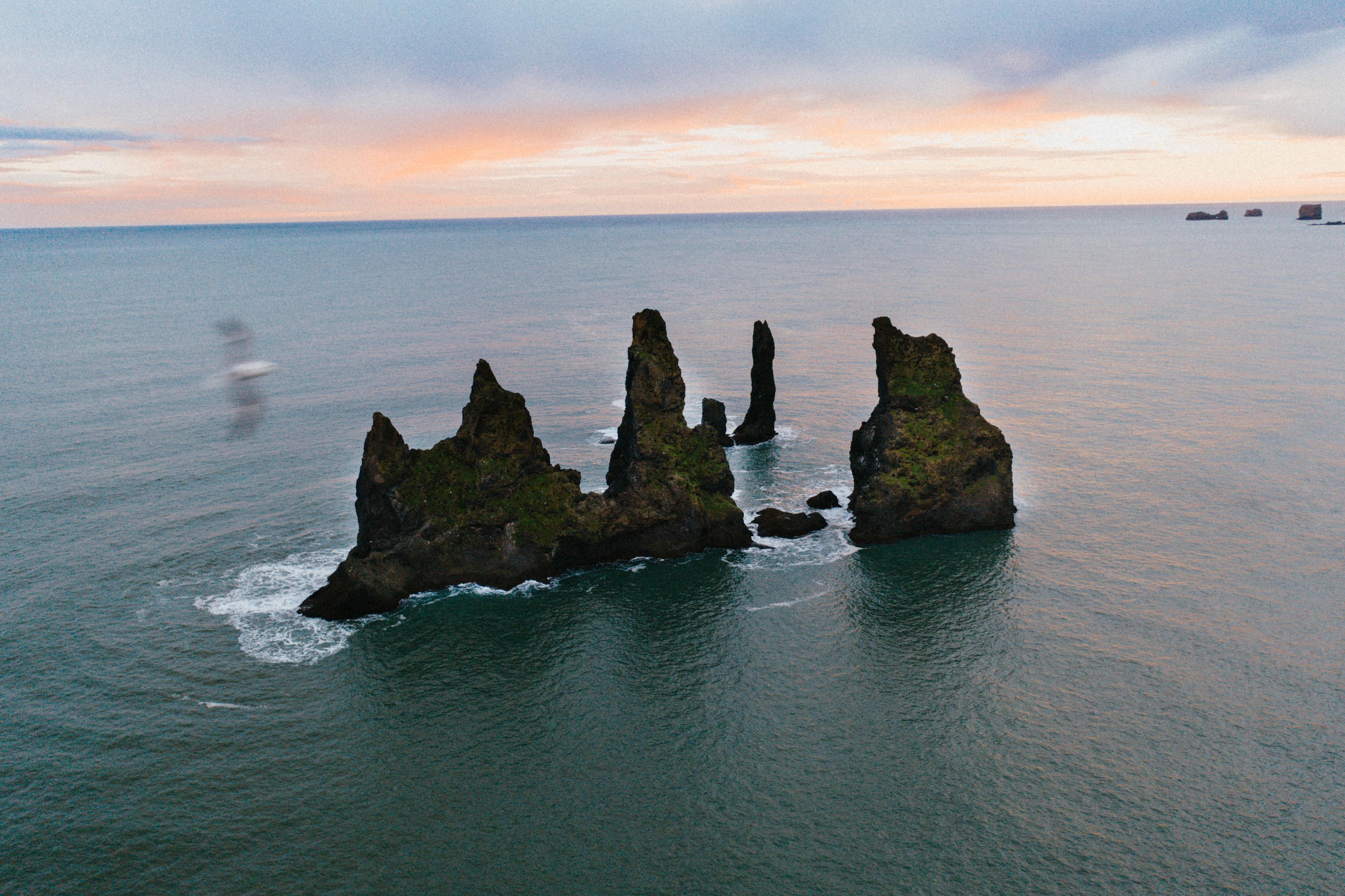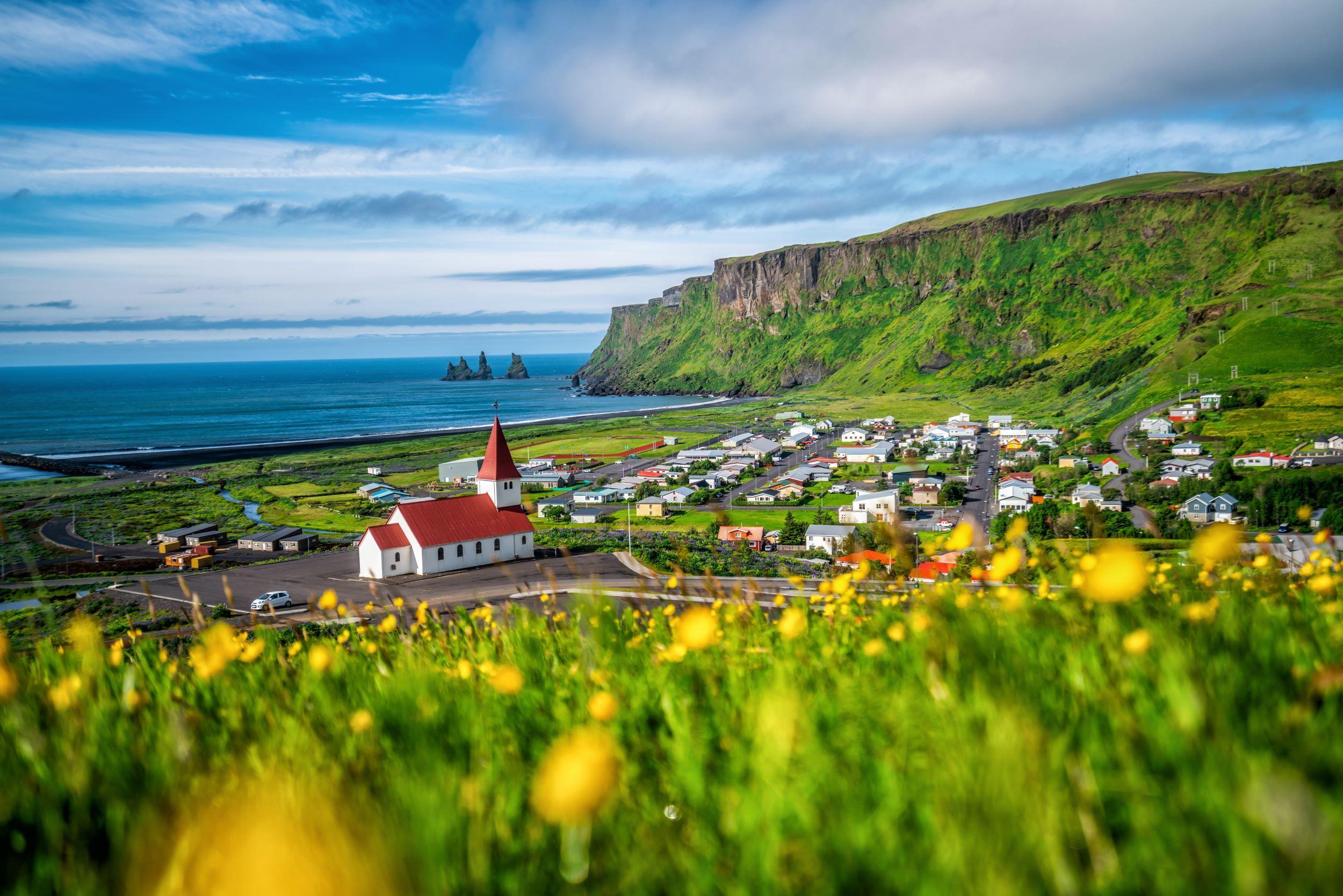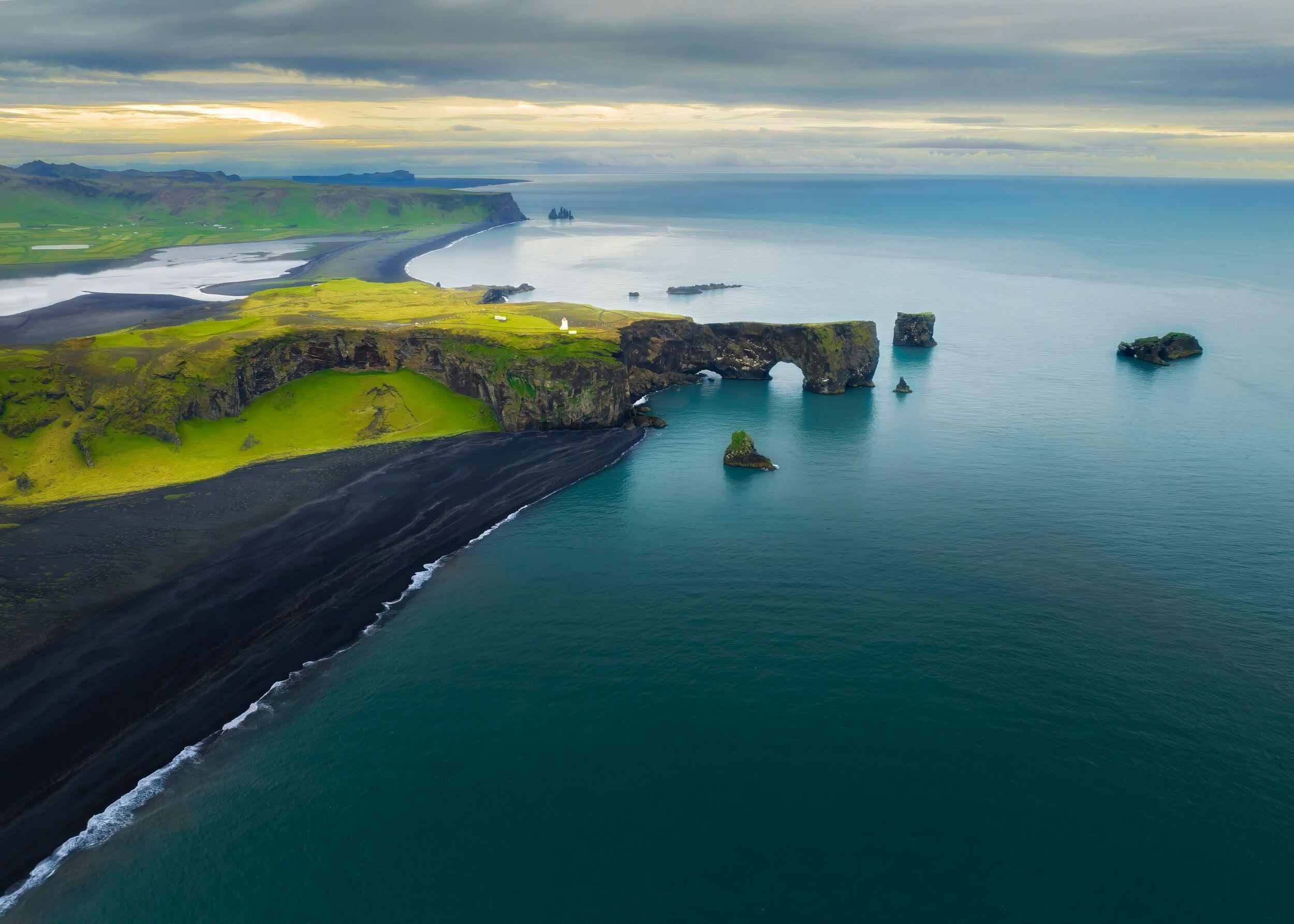
- Best time to visit
- All year round
- Distance from Reykjavík
- 190 km (118 mi)
- Coordinates
- 63.402685, -19.04272
History of Reynisfjara beach
Reynisfjara beach's black sand formed over centuries due to volcanic activity. During eruptions from the nearby Katla volcano, lava flowed to the shore, meeting the frigid Atlantic Ocean. When this molten lava encountered the cold seawater, it solidified instantly. The rapid cooling shattered the lava into fragments. Over time, ocean waves, wind, and other erosive forces broke these fragments into finer particles, resulting in the formation of the epic black sand beach.
The renowned hexagonal basalt pillars formed through a similar process. When a thick lava flow cooled, it contracted and began to solidify from the outside inward and from the bottom up.
The structure that best accomplishes cooling with the least amount of surface area (and thus, the least energy) is the hexagon. As the lava continued to cool, cracks propagated downward, leading to the creation of the long, vertical hexagonal columns. This distinct pattern is evident in numerous places worldwide with basaltic lava flows.
Reynisfjara is also imbued with myths and legends. Local folklore suggests that dark elves crafted the Hálsanefshellir cave and that the Reynisdrangar sea stacks visible from the shore are petrified trolls who were attempting to drag a boat ashore. They were turned to stone when caught by the morning sun.
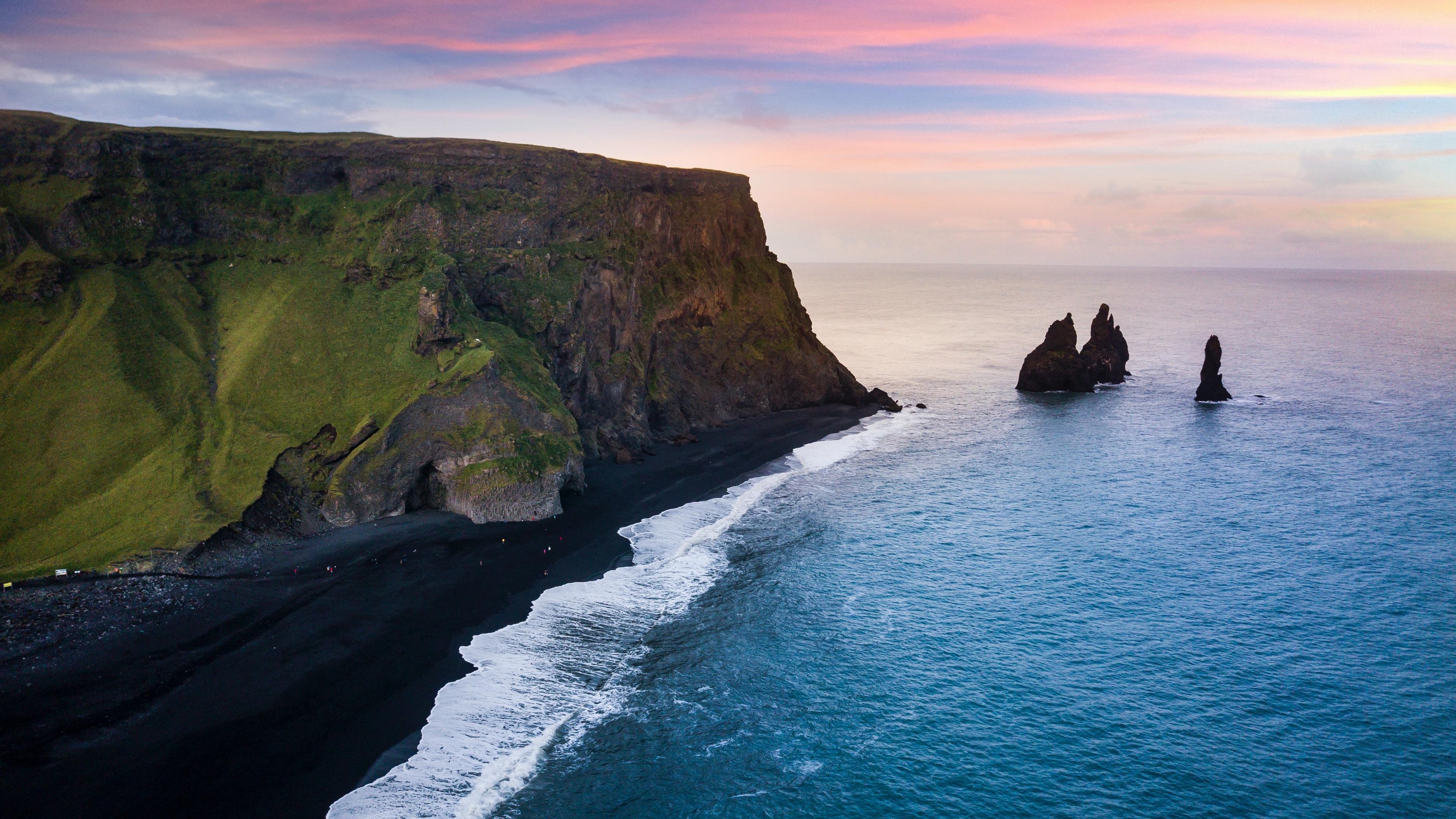
What to do at Reynisfjara black sand beach
With the wild sea crashing against the shore and wind whipping at the cliffs, Reynisfjara is not the kind of beach where you plop down on a towel and take a “beach day”. What draws visitors here is the jet-black sand that sweeps for miles and miles and the striking basalt cliffs that look like they belong on another planet. So much so that Reynisfjara has been used as a filming location for films in the Star Trek and Star Wars franchises.
At one end of the beach, Hálsanefshellir cave makes for a beautiful photograph as the basalt columns frame the view of the beach nicely and you can admire the towering Reynisdrangar sea stacks stranded out in the water. Most Reynisfjara beach tours stop here for an hour to allow visitors time to stroll on the sand, check out the cave and snap some photos of the wild sea against the black sand from a safe distance. For a longer black-sand adventure, you can embark on an ATV tour, crossing rivers and lava fields to reach the wreck of a DC3 aeroplane on the shore. Keen birdwatchers can spot puffins at the Dyrhólaey peninsula which marks the most westerly point of Reynisfjara beach.
There’s also a café at Reynisfjara carpark serving hearty Icelandic dishes, making this the ideal spot for lunch along the south shore. Reynisfjara sits on the south coast, almost halfway between Reykjavík and Jökulsárlón glacier lagoon, so it’s the perfect place to get out and stretch your legs on a multi-day south coast tour to Jökulsárlón and the Diamond Beach.
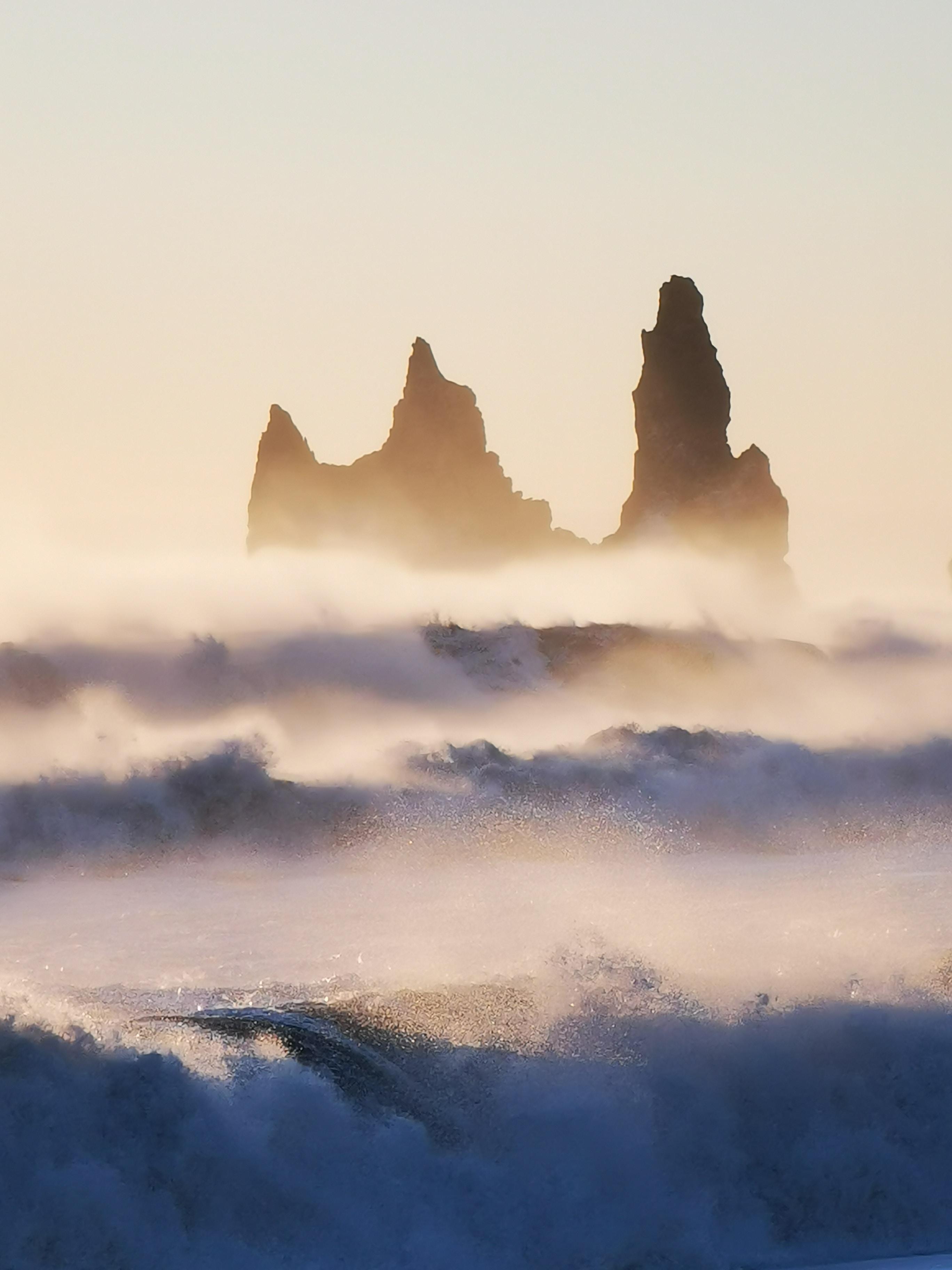
Why Reynisfjara beach is dangerous
One thing you definitely cannot do at Reynisfjara is swim in the sea. Powerful waves, freezing-cold water and circumstances too dangerous for the coastguard to rescue people swept out to sea mean you should stay well back from the water’s edge.
Even paddling in the shallows is not possible as sneaker waves have been known to rush up the beach and sweep people out beyond rescuable distance with no warning. It’s important to pay attention to all the warning signs around Reynisfjara beach, make sure you obey the red, yellow and green system telling you where you can stand on the sand, and don’t climb on the rocks near the shore, no matter how cool you might think it looks for that Instagram shot.
Unfortunately, there have been deaths at Reynisfjara beach with visitors swept out to sea by sneaker waves and dashed off the rocks by immense and sudden swells.
There is also the danger of rockfall and rock slides at Reynisfjara. The most easterly section of the beach is permanently closed due to a large rockslide in 2019. For this reason, climbing on the cliffs and rocks is not permitted.
As long as you stay well away from the water’s edge and stick to the upper sands of the beach, you can safely visit Reynisfjara. All of the warnings, guidelines and signs are for your safety and should not be ignored for the sake of a selfie.
Dangerous Sneaker Waves in Action at Reynisfjara

All About Reynisfjara Beach
Reynisfjara beach is on the south shore of Iceland, to the southwest of the country. It stretches between the charming coastal village of Vík and the puffin-filled cliffs of the Dyrhólaey peninsula.
Just off the Route One ring road that loops around the entire island of Iceland, it’s easy to navigate from Reykjavík to Reynisfjara. Following Route One along the south coast from Reykjavík, you simply turn off at Reynishverfisvegur road after approximately 185 kilometres and you’ll find the carpark for Reynisfjara at the end of the paved road.
It’s around a two-and-a-half-hour drive to the black-sand beach from the capital. Reynisfjara also features on the itinerary of most organised south shore tours from Reykjavík and joining a day trip with a professional guide and driver is an easy way to visit the beach.
Most people spend around an hour here – enough time to snap some photographs of the cave and walk along the sandy shore. Of course, you’ll need longer if you embark on an ATV adventure to the famous plane wreck.
Reynisfjara beach is considered one of the most beautiful beaches in the world, so a visit is definitely worth it. The sweep of black sand shimmers in the sunlight and two towering sea stacks off the coast makes it a photographer’s dream. At one end of the beach, Hálsanefshellir cave looks like something from another planet – formed by twisting stacks of basalt. People visit just to admire the cave and wild waves crashing against the black sand.
Spanning miles and miles of the south coast, you can walk along Reynisfjara beach as long as you stay well away from the waves. Of course, there’s more room to walk on the sand during low tide, but it is still possible to take a stroll at high tide. Apart from short walks in the beach itself, there are hiking trails along the cliffs above Reynisfjara which lead to the Dyrhólaey peninsula where you can spot puffins.
It is absolutely not possible to swim in the sea at Reynisfjara beach. Firstly, the water is freezing-cold throughout the year. But the main reason is the danger of the waves.
Powerful swells crash against the coast with extreme force and even the strongest swimmers can’t tackle the current here. Paddling is not possible either as frequent sneaker waves sweep up the sand and have been known to pull people out to sea in an instant.
It is important to keep well back from the sea at Reynisfjara. Sneaker waves rush up the beach in an instant and pull people out to sea, too far out for a safe rescue by the coast guard. Pay attention to all the warning signs at Reynisfjara, note where the waterline is in the sand and keep as far back from it as possible.
Sadly, there have been fatalities at the beach when visitors have not heeded the warnings, climbing on the rocks near the shore. Huge, unexpected waves have crashed against the cliffs, or sneaker waves have swept up and taken people out to sea. Never climb on the rocks near the sea, even if it does look like a good photo opportunity. It’s not worth your life.
Also known as sleeper, king, or rogue waves, sneaker waves are huge, powerful waves that appear out of nowhere on Reynisfjara beach. They can appear after nine or ten smaller waves, making it impossible to tell how far up the beach they will sweep. They are powerful enough to carry an adult out to sea and can form even when the weather is calm.
Most of Reynisfjara beach is open to the public. However, there is a section at the east end of the shore which is permanently closed due to a rockfall in 2019.
As it is a public space, there are no opening hours for the beach. Reynisfjara Beach parking is free and lasts all day, but it is worth noting that parking overnight is not permitted.
While you may find bottles of Icelandic black sand for sale on eBay or Etsy, you should think twice before buying it. Taking a piece of the country home with you is a nice idea, but removing sand from Iceland’s protected beaches and cliffs is not permitted.
In keeping with the sustainable travel motto “take only photos, leave only footprints,” it is generally accepted that tourists shouldn’t mess with the country’s nature.
Reynisfjara has been featured on many “best beaches in the world” lists and has been made famous as the backdrop in award-winning TV shows and blockbuster films. It has featured in films in the Star Trek and Star Wars franchises, the modern epic Noah, and the TV series Game of Thrones and Vikings.
The beach is open to the public throughout the year and it can be just as beautiful in winter when the cliffs are dusted with snow as the long days of summer when the jet-black sand shimmers in the sunlight.
Between May and August is prime puffin-watching season, so those heading to the Dyrhólaey peninsula should visit in summer. The biggest crowds tend to descend in the middle of the day. So, if you want to experience Reynisfjara at its quietest, consider beating the crowds and getting there before 10am, or hanging on until late afternoon.
Like most outdoor activities in Iceland, you’ll want to dress in layers for Reynisfjara beach. A sports T-shirt, light jumper and waterproof jacket in summer to account for the Reynisfjara beach weather taking a turn.
In winter, you’ll need to wrap up warm as a biting wind whips off the coast. Hats, woolly jumpers or fleeces, scarves and insulated gloves are essential alongside a waterproof coat. You’ll want to wear comfortable shoes to explore the south coast – waterproof hiking boots are the best option.
It is definitely not safe to swim at Reynisfjara black sand beach due to the power of the waves and the freezing-cold temperature of the water. Most of Iceland’s black-sand beaches are too dangerous and too cold to swim. However, if you want to swim in the ocean in Iceland, you can head to Reykjavík’s Nauthólsvík beach.
Related tours
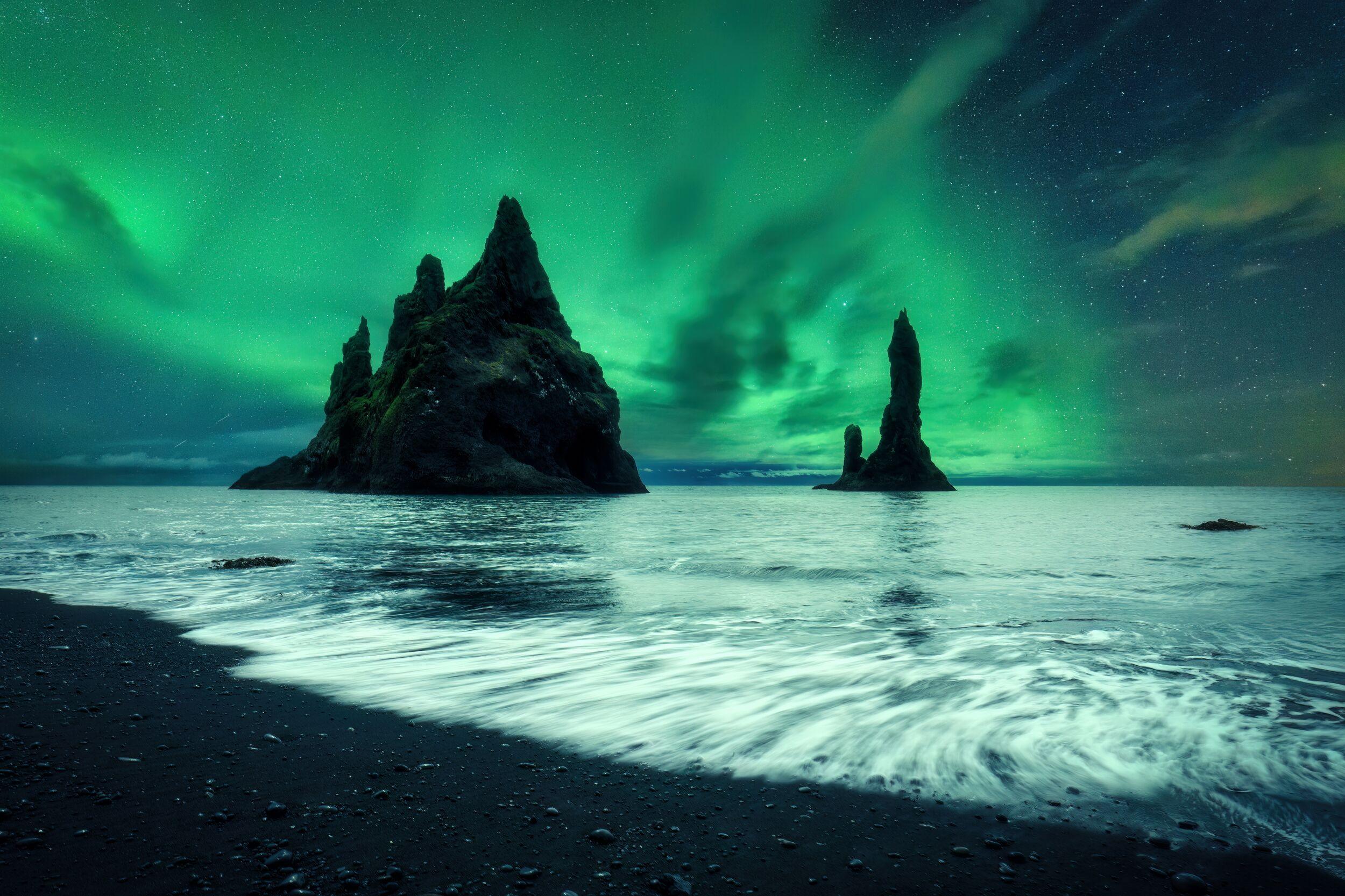
South Coast & Northern Lights - Combo Deal
A Carbon-Neutral sightseeing tour to Iceland's most iconic region. Visit Seljalandsfoss, Skógafoss, Reynisfjara black sand beach, and Vk village and the northern lights on this amazing combo tour.

South Coast Wonders
This carbon-neutral Iceland South Coast tour is perfect for nature lovers looking to explore Iceland’s top natural attractions in just one day. Visit the stunning Seljalandsfoss and Skógafoss waterfalls, walk along the famous Reynisfjara black sand beach, see the breathtaking Sólheimajökull glacier, and experience the charm of Vík village—and enjoy incredible landscapes along the way.

- Multiday Tour
Iceland On a Budget - 4 days
Explore Iceland’s most stunning landscapes without breaking the bank on this 4-day (3 nights) Iceland on a Budget package. Experience the highlights of the Golden Circle and South Coast, where powerful waterfalls, black sand beaches, and volcanic wonders await. With affordable, hassle-free travel options, carbon-neutral transportation, and expert guides, this package ensures an unforgettable Icelandic adventure at great value.


